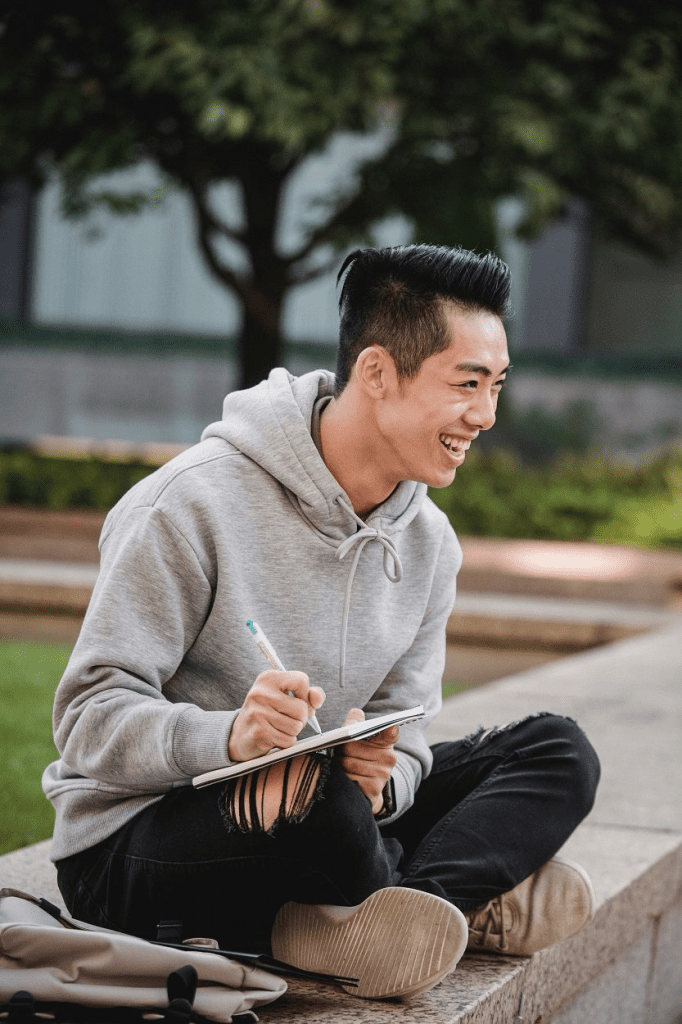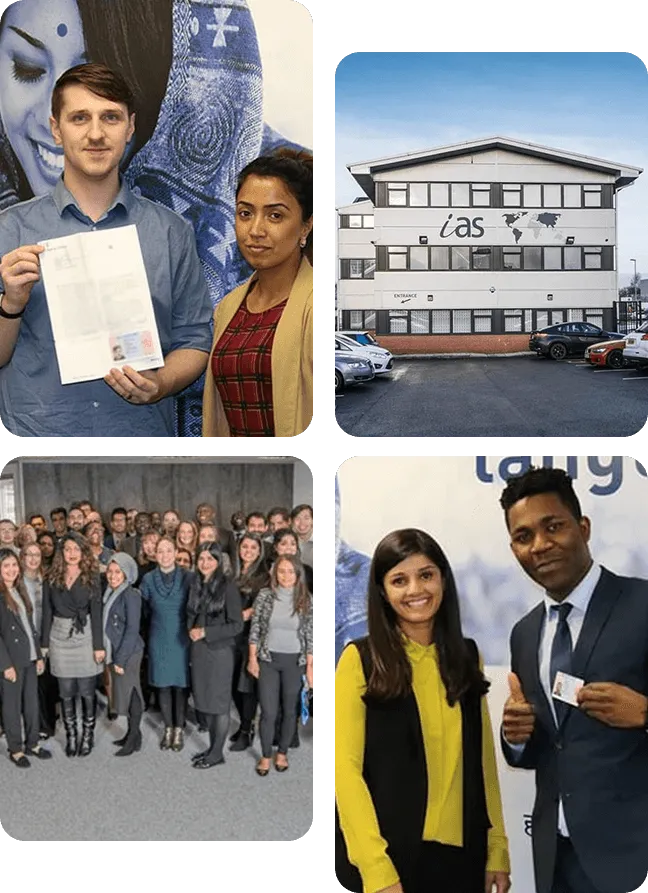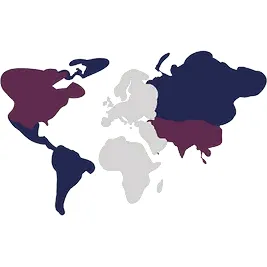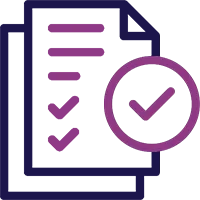M1 Student Visa
The M1 Visa is intended for students who want to come to the US to enrol in vocational studies. Examples of activities they can participate in while on the M1 Visa include mechanical classes, cosmetology courses, or cooking classes. Find out more about the requirements and the application process for the M1 Visa.
To receive expert advice and assistance with your application, call us today on +1 844 290 6312 or +443334149244.
Read our 1001 reviews
Request a call back from our immigration experts
Benefits of Choosing IAS‘ USA Immigration Lawyers
When it comes to obtaining a USA visa or permit, IAS USA immigration lawyers are well-equipped to help you.
With IAS’s track record of successfully helping clients visit or immigrate to the United States, we can help businesses and individuals achieve their goals.
Our dedicated immigration lawyers provide our services through a comprehensive and personalised approach. With IAS, you enjoy:

Compassionate support from an experienced immigration lawyer dedicated to your success



Support in gathering supporting documents and completing a high-quality application.



Confidence that your case is being handled by an experienced team.



In-house document checks done by lawyers who are well-versed in US immigration matters.
Services we Provide
What is the M1 Visa?
The M1 Visa is a non-immigrant visa that allows foreign pupils to come to the US to take part in vocational, non-academic studies.
While on the M1 Visa students cannot register for academic courses. If you would like to come to the US to study at an academic institution, you should consider applying for the F1 Student Visa instead.
Those who come to the US on the M1 Visa can study on a part-time basis for up to six months but they are not allowed to seek employment and work.
To be eligible for the M1 Visa, you have to be able to prove that you have enough funds to cover all expenses during your stay in the US.
In most cases, the M1 Visa is initially granted for a period of one year.
Nevertheless, those who wish to stay in the US longer can apply for an extension of up to three years.
What are the requirements for the M1 Visa?
If you would like to apply for the M1 Visa, you have to meet the following requirements:
- Be accepted at an institution from the list published by the Student Exchange Visitor Program (SEVP)
- Be proficient in English – you have to be able to understand lectures and coursework. To prove your proficiency, you can take a standardized English proficiency test such as TOEFL or IELTS
- Be able to prove your non-immigrant intent – you can do it by showing that you can prove strong ties to your home country that will make you return once your visa expires.
- Have enough funds to cover your expenses in the US – you will need to submit bank statements or other evidence to confirm your financial status.
If you get in touch with our immigration lawyers, they can assess your eligibility for the M1 Visa. If they determine that you do not meet the requirements, they can advise you what other US visas you can apply for (e.g., F1 Student Visa, J1 Visa, or the EB2 Visa.


How to apply for the M1 Visa
After your chosen educational institution accepts you, they will issue Form I-20 to you. Only schools approved by USCIS can issue the form.
Once you receive it, you will be able to initiate the application process. Keep in mind that being accepted by a US school does not mean that your visa will be granted.
You have to go through the application process and receive the decision from USCIS.
Once you receive approval from the US institution, you have to submit Form DS-160 online.
There, you will have to provide information about your background, the purpose of your trip to the US, and the vocational program you wish to attend.
Make sure to print the confirmation page you will see at the end of the form as you will need to bring it to your visa interview later on.
The next step is to pay your visa application fee of $185.00 . Depending on which country you are applying from, you might also have to pay additional visa issuance fees.
In addition to that, you will have to pay the SEVIS I-901 fee of $350. That is because all international students coming to the US on the M1 Visa are registered in SEVIS.
Remember to keep the receipts for all these fees because they will be needed later.
After you have paid all the fees, you can schedule your visa interview and start gathering the required supporting documents.
Finally, there will be a visa interview which will require physical attendance, during the interview you will be asked questions designed to verify whether you meet the eligibility criteria for the M1 Visa.
What documents do I need to include in my application?
When you are applying for the M1 Student Visa, you have to submit a number of supporting documents to prove that you meet the eligibility requirements for it. Your portfolio has to include the following:
- A valid passport for at least six months beyond your intended stay in the US
- Proof of your educational qualifications
- Proof of your proficiency in English
- Evidence of having enough funds to cover your stay in the US
- Evidence of having strong ties in your home country, for example, a job contract or a lease for an apartment
- A passport size photograph.
To make sure that you prepared all the necessary documents, hire one of our immigration lawyers. Thanks to their help you can avoid delays caused by the failure to include some of the needed evidence.
What can I do on the M1 Visa?
If your application for the M1 Visa is successful, you will be able to come to the US to complete your vocational studies full-time. You will also be able to open a US bank account, get a driving license, and access healthcare. If you would like to change schools after you arrive, you will be allowed to do it but only within the first six months of your program.
There are certain things that international students on M1 Visas are not allowed to do, however. These include:
- Working full-time out of campus
- Taking part in the vocational program as part-time students
- Changing schools or programs after six months of arriving in the US
- Enrolling in a degree bearing education
- Enrolling in language courses.
- Enrolling in technical courses
If you would like to work while on the M1 Visa, you have to apply for the Employment Authorisation Document or M1 Visa Work Permit. Keep in mind, however, that even if you receive these permissions, you will only be allowed to work on campus, part-time when the school is open and full-time during breaks when there are no classes. Moreover, all the work that you do while on the M1 Visa should be related to what you study.
How long does the M1 Visa last?
The validity of the M1 Visa varies depending on how long your vocational course lasts. Some visa applicants are granted the visa for the total duration of their study, while others receive it for a shorter period of time. In most cases the M1 Visa is valid for one year.
No matter how long you are issued the visa for, your Form I-20 remains valid only for one year. That means that even if your M1 Visa is valid longer, you have to get a new Form I-20 each year.
The maximum validity of the M1 Visa and the Form I-20 is three years. If your M1 Visa is not valid for the whole duration of your course, you will have to get an extension to finish it. You can do that by filing Form I-539, Application to Extend or Change Nonimmigrant Student Status and submitting it to USCIS.
What is the processing time of the M1 Visa?
Applications for the M1 Visa are usually processed quite quickly, before your visa interview. That means that most applicants receive the decision immediately after their interview.
On average, the processing of the M1 Visa takes a minimum of four weeks. When you start your application for the M1 Visa, take into consideration when your vocational course starts.
If you make any mistakes in your application or forget to include some of the required documents, the processing of your M1 Visa application might take longer.
Although it is not essential, this is why it is recommended that you seek the advice of an immigration lawyer before you submit your application.
Can I bring my dependents with me on the M1 Visa?
If your application for the M1 Visa is successful, you will be able to bring your dependents (i.e., your spouse and unmarried children under the age of 21) to the US with you.
To be able to accompany you, your dependents have to apply for the M2 Visa. It is a permit intended for the dependents of M1 Visa holders.
Once they receive their M2 Visa, they will be able to stay in the US for the duration of your vocational studies.
They will get their individual I-20 forms but once your M1 Visa expires, they will have to immediately leave the US and return to their home country.
If your dependents come to the US on the M2 Visa, they will not be allowed to work or study a course that leads to a degree.
They will, however, be able to take part in short recreational courses.


Table of Contents
Table of Contents will appear here.Legal Disclaimer
The information provided is for general informational purposes only and does not constitute legal advice. While we make every effort to ensure accuracy, the law may change, and the information may not reflect the most current legal developments. No warranty is given regarding the accuracy or completeness of the information, and we do not accept liability in such cases. We recommend consulting with a qualified lawyer at Immigration Advice Service before making any decisions based on the content provided.
Frequently Asked Questions
Here at IAS, our lawyers have expert knowledge of US immigration lawyers. They have helped many foreign citizens successfully apply for US visas, including the M1 Student Visa.
If you seek advice from one of our immigration lawyers, the process of applying for the M1 permit will be straightforward and stress-free. Our lawyers will help you complete all the forms and gather all the necessary documents.
If you want to bring your loved ones to the US with you, our lawyers can tell you what the best way to do it is. Thanks to the help of our lawyers, you can be sure that there are no mistakes in your application and that you included all the necessary documents.
To find out more about our citizenship and immigration services can help, get in touch today by calling +1 844 290 6312.
Once you are in the US on the M1 Visa, you can change your student status to another non-immigrant visa. There are some restrictions, however. For example, you cannot change to the F1 Student Visa. Moreover, you cannot change to H Visa status if that means you will be working using the skills you gained during your vocational study in the US.
Having health insurance is not a requirement to receive the M1 Visa. That means that immigration officers will not ask about it and you do not have to include the proof of having it in your documents file.
Nevertheless, as the costs of healthcare in the US can be extremely high, it is strongly recommended to purchase health insurance before you arrive.
SEVP stands for the Student and Exchange Visitor Program. Being an SEVP approved school means that the institution is eligible to enrol F1 and M1 students. When you are choosing a school for your vocational study in the US, you have to make sure that it is SEVP approved.
Both visas are known as Student Visas. Nevertheless, while the M1 Visa is intended for individuals coming to the US for vocational study, the F1 Visa allows students from a foreign country to enrol in full-time degrees and other academic programs.
Students who are in the US on an F1 Visa have the freedom of choosing whether they study part-time or full-time. Those who are in the country on the M1 Visa, however, must study their vocational course full-time.
If you come to the US on an F1 Visa, you will be able to change schools and programs at any point. On the M1 Visa, you can transfer schools only during the first six months of your stay in the US.
Finally, F1 Visa holders can work off-campus and can undertake part-time, full-time or temporary employment. On the M1 Visa, on the other hand, students can apply for a work permit and seek employment but they are only allowed to work on campus.


What our clients are saying
How our UK Immigration Lawyers can help
At the Immigration Advice Service our lawyers specialise in a wide range of UK visas, nationality and asylum applications and have represented clients in various successful complex and high-profile cases.















